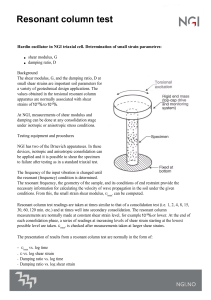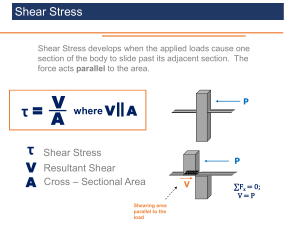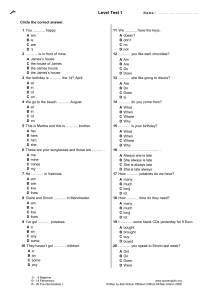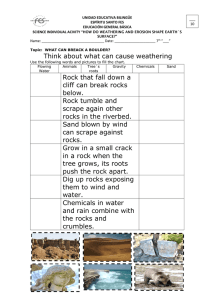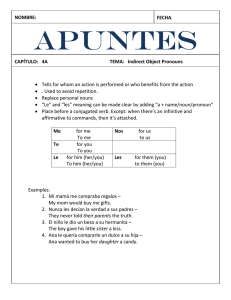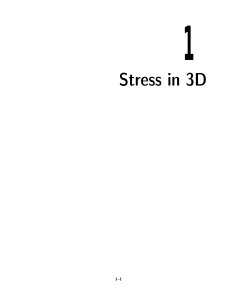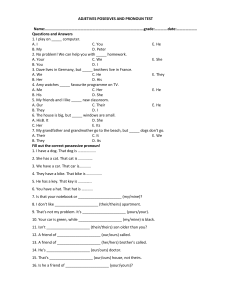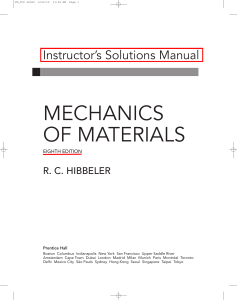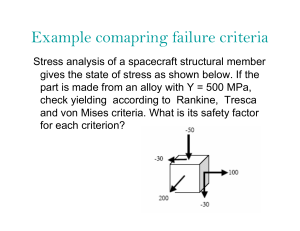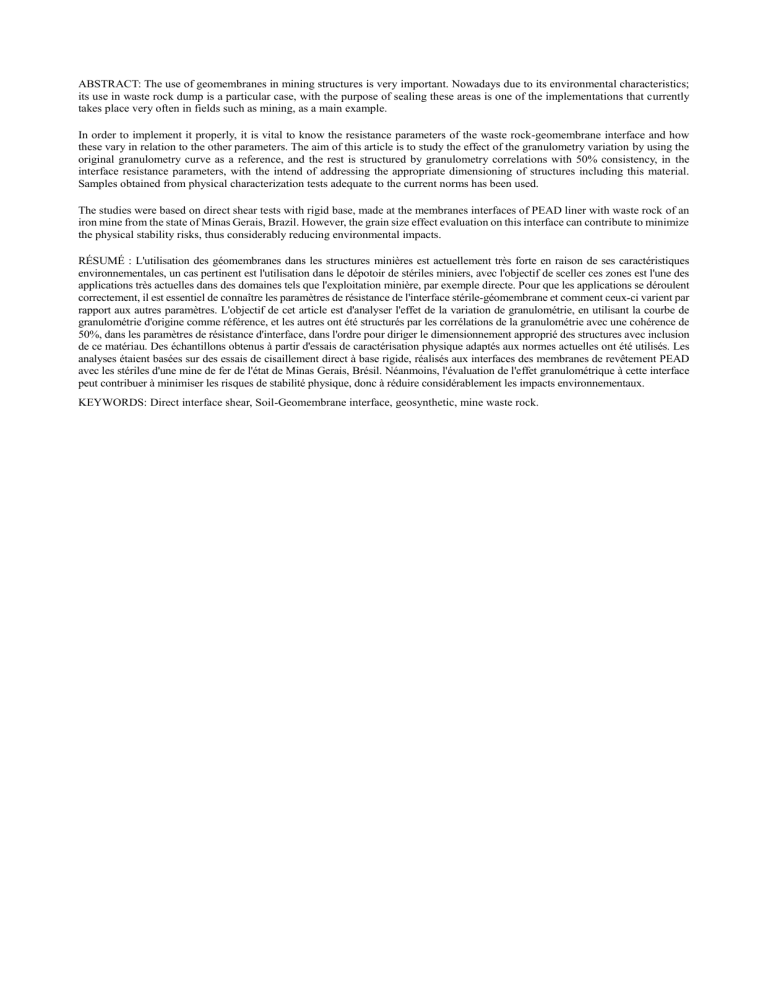
ABSTRACT: The use of geomembranes in mining structures is very important. Nowadays due to its environmental characteristics; its use in waste rock dump is a particular case, with the purpose of sealing these areas is one of the implementations that currently takes place very often in fields such as mining, as a main example. In order to implement it properly, it is vital to know the resistance parameters of the waste rock-geomembrane interface and how these vary in relation to the other parameters. The aim of this article is to study the effect of the granulometry variation by using the original granulometry curve as a reference, and the rest is structured by granulometry correlations with 50% consistency, in the interface resistance parameters, with the intend of addressing the appropriate dimensioning of structures including this material. Samples obtained from physical characterization tests adequate to the current norms has been used. The studies were based on direct shear tests with rigid base, made at the membranes interfaces of PEAD liner with waste rock of an iron mine from the state of Minas Gerais, Brazil. However, the grain size effect evaluation on this interface can contribute to minimize the physical stability risks, thus considerably reducing environmental impacts. RÉSUMÉ : L'utilisation des géomembranes dans les structures minières est actuellement très forte en raison de ses caractéristiques environnementales, un cas pertinent est l'utilisation dans le dépotoir de stériles miniers, avec l'objectif de sceller ces zones est l'une des applications très actuelles dans des domaines tels que l'exploitation minière, par exemple directe. Pour que les applications se déroulent correctement, il est essentiel de connaître les paramètres de résistance de l'interface stérile-géomembrane et comment ceux-ci varient par rapport aux autres paramètres. L'objectif de cet article est d'analyser l'effet de la variation de granulométrie, en utilisant la courbe de granulométrie d'origine comme référence, et les autres ont été structurés par les corrélations de la granulométrie avec une cohérence de 50%, dans les paramètres de résistance d'interface, dans l'ordre pour diriger le dimensionnement approprié des structures avec inclusion de ce matériau. Des échantillons obtenus à partir d'essais de caractérisation physique adaptés aux normes actuelles ont été utilisés. Les analyses étaient basées sur des essais de cisaillement direct à base rigide, réalisés aux interfaces des membranes de revêtement PEAD avec les stériles d'une mine de fer de l'état de Minas Gerais, Brésil. Néanmoins, l'évaluation de l'effet granulométrique à cette interface peut contribuer à minimiser les risques de stabilité physique, donc à réduire considérablement les impacts environnementaux. KEYWORDS: Direct interface shear, Soil-Geomembrane interface, geosynthetic, mine waste rock. 1 INTRODUCTION Geosynthetic is a solution with many applications in the last decades because of the versatility of its material that comes into contact with the soil directly and applied in the field of engineering in one-dimensional (strip), twodimensional or three-dimensional structural form. Characteristics that vary depending on the need, being the main function of surface waterproofing, erosion control and soil reinforcement when used correctly (Pilarczk, 2000; Vertematti, 2004, 2015; Sieira, 2006). The continuous study of geosynthetic has led mainly to the knowledge of soil interfaces with geosynthetic, and how they absorb and redistribute the stresses of the soil matrix, what is the stress behavior in direct shear tests, but an incorrect choice of stresses (generally low) to be used can be reflected in errors and results contrary to reality in the field (Koutsourais et al., 1991, Girard et al. 1985; Giroud et al. 1990; Gourc et al. 1996). Many studies regarding the use of the direct shear test have been performed to determine the best results concerning the geosynthetic structure and to obtain the value of the interface strength, to know the influence of the effects of grains on geosynthetics related to mechanical damage (Mousavi, 2017; Punethaet al., 2017; Ghazizadeh & Bareither, I, II, 2018; Pinho-Lopes & Lopes, 2018; Sudarsanan et al., 2018). The waterproofing of the material placed in the controlled deposits is an important step, and the use of geomembranes is one of the most common solutions making a relevant interface between the materials. So, it is necessary to obtain the resistance parameters in this interface to avoid the occurrence of corrosion. the waterproofing process of a mine waste failure rock pile (Vertematti, 2004; Giroud et al., 1985; Lopes & Lopes, 2010). Direct shear tests were performed with a relative compactness of 50% for the interface, as the mine waste rock has a mechanical characterization record (Paria, 2017). According to Koerner and Aho (2008), the GMA Techline, from the Geosynthetic Materials Association (GMA), provides answers to technical questions about geosynthetics, material strength, compression and shear strength. To obtain better answers with an analysis and comparison of results with specific conditions to ensure a good dimensioning from a correct selection of resistance parameters, reducing safety risks and economic losses. 2 METHODOLOGY A campaign composed of direct shear tests was carried out with the objective of reaching the resistant properties of the geomembrane ore-mineral waste rock interface, knowing the properties of deformed samples of mine waste rock with a known compactness in order to be able to test the ore waste rock with certain values (Martinez et al., 2011; Frost et al., 2012). In general, mine waste rock materials can be evaluated by analyzing the behavior of sandy soils, the lower concentration of fine plastics and the compactness effect in both materials has justified the adoption of evaluation techniques, similar test methodologies those used for properly sandy soils (Belly, 2015). 1.1 Geotechnical characterization of mine waste rock samples 1.1.1 Technological Characterization According to Paria (2017) the samples were artificially reproduced with a variation of the size of the mine waste rock. An opposite procedure was performed for particle size analysis according to ASTM D6913 / D6913M, because graphically, it was possible to critically obtain the values of accumulated percentages, and then to achieve analytically the values of accumulated and partial retained percentages, reaching, in the end, the necessary weights of the parcels are obtained. The granulometric curves, shown in Figure 1, were obtained from the percentages obtained from the test. and described in Table 1 (Paria, 2017). Figure 1. Particle size curves of artificially structured mine waste rock samples (Paria, 2017) Table 1. Particle size distribution according to D6913/D6913M of ASTM, 2017 Diameter (mm) EMF-01 (%) EMF-02 (%) EMF-03 (%) 60 - 4.75 - - - G 4.75 - 2 31.15 23.93 14.38 M 2 - 0.425 13.82 16.71 22.51 F 0.425 - 0.075 34.44 22.16 12.89 Silt 0.075 - 0.005 18.6 34.42 45.74 Clay 0.005 - 0.001 1.67 2.23 3.38 Colloid 0.001 > 0.32 0.55 1.1 Scale Grave Sand According to Esposito (2000), the specific mass of the grains of iron ore tailings tends to be high, since they are formed by hematite (10 to 15% of the solids), whose specific grain mass (s) is around 5.25 g/cm³, the rest being quartz (s between 2.65 to 2.70 g/cm³). In the case of the iron ore studied, the high specific gravity of the grains is influenced by the amount of iron particles present in the material, values that are justified by the high iron content present. According to ASTM D4253-00, the maximum and minimum specific masses of granular materials are obtained by knowing the specific mass of the grains of the material in order to obtain the minimum and maximum void ratios. For the determination of the minimum dry specific mass, the mine waste rock is poured well loose in a tube, then the tube is lifted (extracted) and the material fills the cylinder in an extremely spongy compaction. And to calculate the lowest, it is vibrated by reaching the minimum value of voids. With both values, the determination of the masses can be achieved when a value for the relative compactness is placed, which for this study was 50%. 1.1.2 Geotechnical Characterization For the direct shear test, a compact equipment was used when compared to the traditional equipment used in soil mechanics, servo-controlled, for testing 100 x 100 mm specimens, with a system that allows the control, control and digital monitoring of loading, displacement and travel speed, which is controlled by the operating software on a computer or by commands on the human machine interface screen (Paria, 2017). According to Head (1994) the process depends on the type of soil and the condition under which it will be tested. The maximum particle size present in significant quantities shall not exceed one tenth of the sample height. For a 20 mm or 25 mm high sample, particles trapped in a 2.0 mm sieve should be removed. The soil should not contain a significant amount of fine material (passing through at 63µm). This avoids the segregation of fine particles if dry and ensures that the drainage free condition is maintained if saturated. The author also recommends that in the densification phase of a granular soil, from a vertical displacement curve versus time root, t100 was calculated from the extension of the initial rectilinear interval to the horizontal axis, equivalent to the final interval (stabilization of volumetric variations). The intersection point gives the root of t100 in minutes. The value of t100 was used to define the shear rate. The shear rate data for the samples gave a value of 0.15 mm/min, considered in previous tests. Iron mine waste rock with zero moisture content was mechanically mixed with all requested particle size percentages to form the sample to be performed for testing. In evaluating the shear strength at the interface, the geomembrane was attached to a wooden block that would be placed at the bottom of the direct shear box and then the prepared soil sample was placed in the shear box. To determine the shear strength of the interface and the effect of reinforcement on the shear strength, the geosynthetic occupied half of the shear box as shown in Figure 2. Figure 2. Particle size curves of artificially structured mine waste rock samples. The direct shear tests were conducted subject to ASTM D3080-04, helping to evaluate the effect of the interface zone on the shear strength mobilized in the test specimen. To conduct the direct shear test, 9 samples of mine waste rock assemblages were artificially assembled from deformed iron ore mining operations were sheared in a 100 mm square box under normal effective stresses of 200 kPa, 400 kPa and 800 kPa. The assembled shear box was placed in an automated direct shear apparatus (Figure 3) with an applied shear rate of 0.15 mm/min. Figure 3. Details of compact conventional direct shear equipment 1.1.3 Geomembrane 1.1.3 Geomembrane Smooth HDPE polyethylene geomembranes were manufactured with a high density of 0.94 g / cm3 and a thickness of 1.50 mm, with a breaking strength of 40 kN / m and an elongation at break of 700%. The geomembrane has excellent durability,and this is thanks to the fact that the material is added with thermostabilizers, carbon black and antioxidants. According to Greenwood et al. (2012) the period in which geosynthetics must function properly as for which they were installed, can range from months to more than one hundred years. Table 2 presents, from the particle size analyzes performed on the samples, the values of the characteristic diameters D10, D30 and D60 and the value of the coefficient of uniformity (Cu) and curvature (Cc). These values were obtained to verify how the particle size of the samples interferes with the friction angle., based on the characteristic diameters, Table 2: Summary of Sample Particle Size Characteristics Sample D60 D30 D10 Cu Cc EMF-01 0.79 0.100 0.030 26.3 0.4 EMF-02 0.47 0.061 0.020 23.5 0.4 EMF-03 0.28 0.036 0.012 23.3 0.4 According to Paria (2017) observed that Cu for all samples is greater than 15, presenting materials with well depleted granulometric curves, occupying a wider region with different diameters, additionally it presents a particular behavior typical of non-uniform materials. Although classical classifications attribute to granular soils a Cc between 1 and 3, the studied mining waste rocks present a reasonable gradation. Although the value of D30 is relatively close to D10. After all, we have tried to work with a well-distributed granulometry, which presented a distribution proportionally equivalent to that of the original sample. Once the void ratio for each sample in the medium compactness condition and the specific gravity of the grains were known, it was possible to obtain the values of the dry specific mass, the values are shown in Table 3. Table 3: Specific dry masses of each sample for CR = 50% Sample emax emin e ρs g/cm3 ρd g/cm3 EMF-1 0,90 0,25 0,57 3,960 2,516 EMF-2 0,86 0,24 0,55 3,952 2,549 EMF-3 1,00 0,32 0,66 4,096 2,467 The molding of the sample has depended on the values presented in the table above, since, from the knowledge of the value of the dry specific mass and the volume of the mold, the value of the mass used for each shear box was calculat ed for the three samples (Paria, 2017). Table 4: Effective Friction Angle Values (φ') Sample Mine waste rock Mine waste rock geomembrane interface EMF-01 42,38 27,19 EMF-02 41,95 26,45 EMF-03 40,36 25,93 The friction angles obtained in the tests are shown in Table 4, and the values for the mine waste rock show a trend of linear growth of the friction angle for the three samples, at all correlated diameters. Although all curves are systemati cally parallel, the presence of fines can influence the shear strength, compromising grain locking, as shown in Figure 4. The differences between the floating and non-floating states are shown in this figure. Coarse particles floating in a fine particle matrix do not significantly modify the strength and deformation characteristics of the mixture, so a mode l containing larger particles may be represented by a sample containing only smaller particles completely modifying t he soil behavior. (Fragaszy et al., 1992). Figure 4: (a) floating state: fine particle matrix; (b) non-floating state: fine particles occupying coarse particle voids (Fragaszy et al., 1992) 4 CONCLUSIONS The objective of the study was to analyze the response of the mine waste rock-geomembrane interface where the sam ple matrix was based on fines. For this purpose, direct shear tests were carried out using smooth HDPE geomembrane s and samples with 50% compactness, through the results obtained it is observed that: In general, the use of smooth surface geomembranes affects the shear strength, decreasing the values up to 3 6% of the natural value of the iron barren. The influence of the variation of the granulometry of this work o n the determination of the friction angle of the mine waste rock, which is the motive of this investigation, di d not offer any doubt, neither in the natural test nor in the obtaining of results at the interface. For both case s, the dependence between the size of the mine waste rock samples and the shear strength of the mine waste rock was noted by the trend of decreasing friction angle with decreasing particle diameter. Although the reduction of the friction angle is not the most convenient when working with structures, the pr esented results can be useful for the correct sizing of waterproofing layers in dumping areas specifically for iron ore. The conformity and the quality of reproduction of the results for the various samples, with differen t particle sizes, affirmed with conviction and verified the coincidence of the quality of the projected and real ized molds. Likewise, for the mining waste rock geomembrane interface, the properties measured the qualit y. Finally, it should be noted that for a correct geotechnical design analysis, studies of this nature are very imp ortant, since many structures are sized based on tests performed with reduced granulometries when compare d to those present in situ and related to geosynthetics. In general, when this technical analysis is performed, the result of the project is more and more certain since they are based on conservative parameters. Otherwis e, looking for a study of the effect of scale, structures involving smaller layout areas can be suggested.
